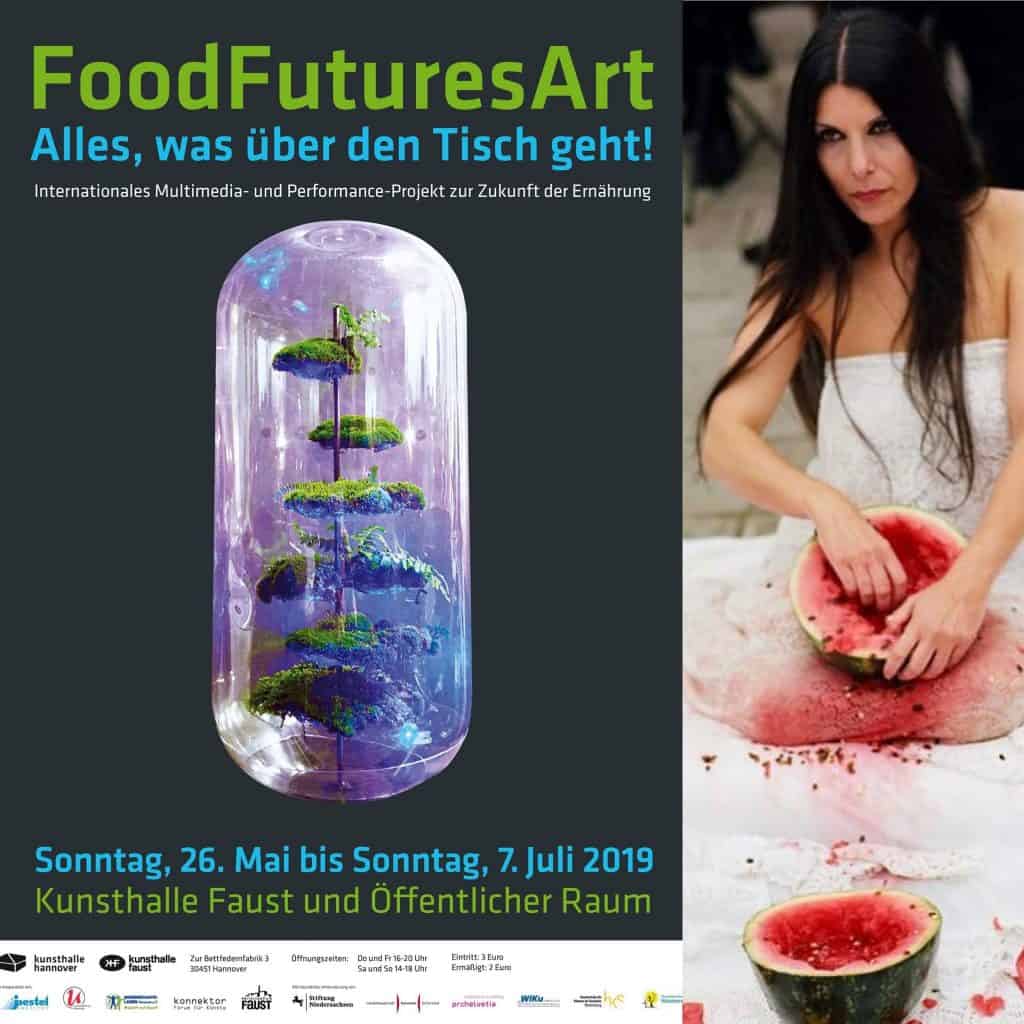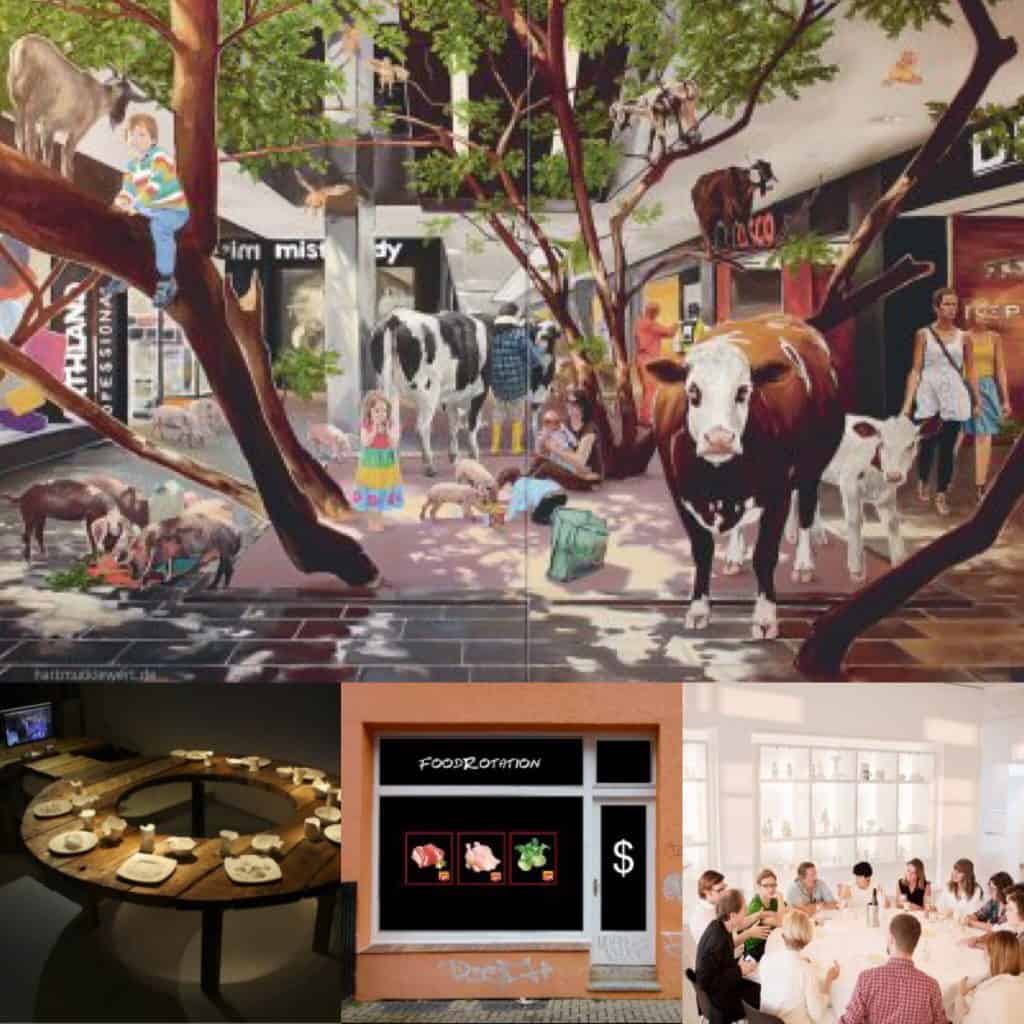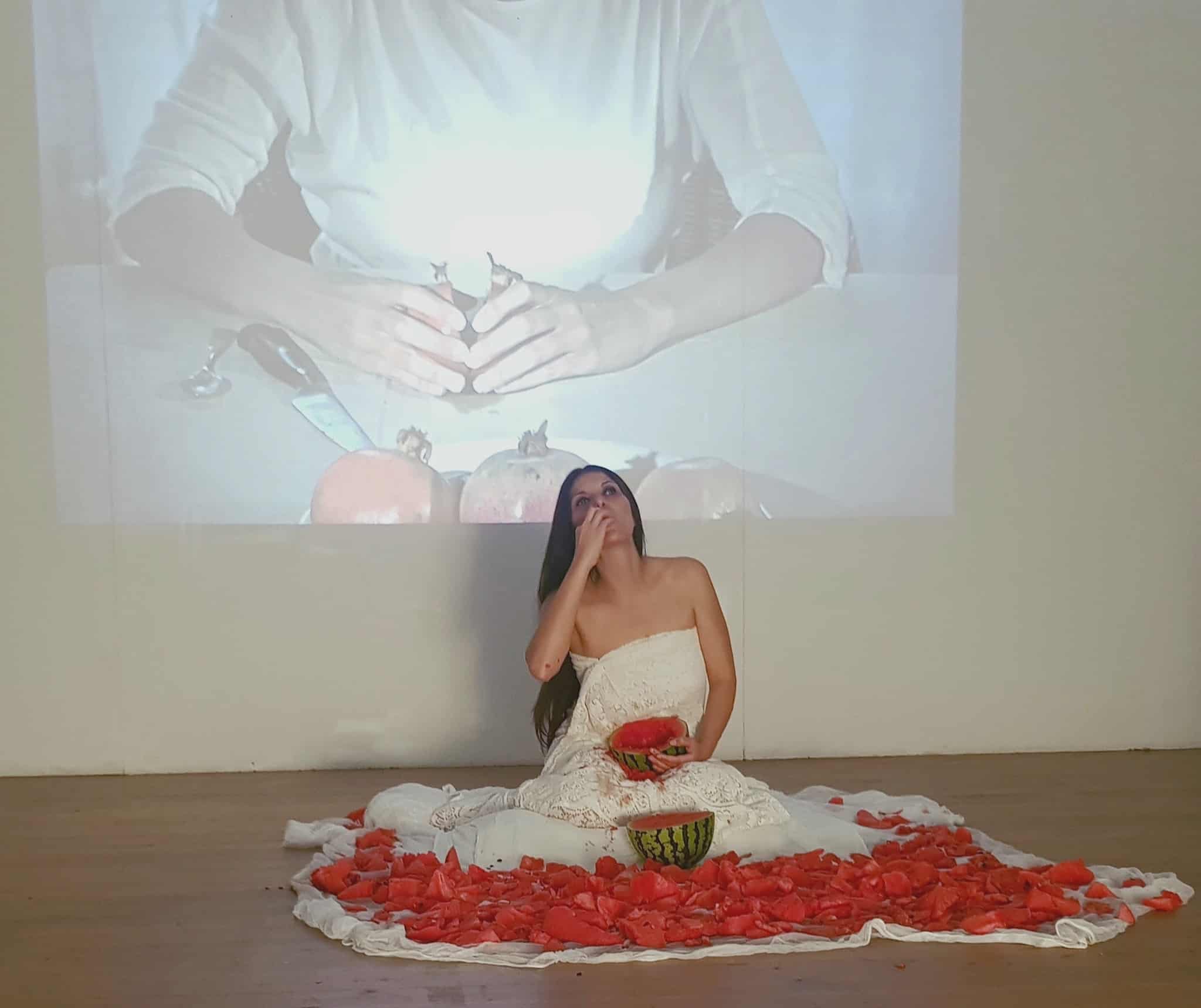This article was first published in Spanish on June 9th at TheFoodieStudies
L ast June 2nd the artist Romina de Novellis sat down on a white sheet that was covered with chunks of watermelon. She was wearing a white tablecloth as a dress. Very slowly, she began to take out the pulp from another watermelon and to eat it. Meanwhile, two musicians were accompanying her, one on the violin, the other on the accordion, and a video installation was screened in the background on which the artist herself was eating a pomegranate in the company of two vultures.
The italian artist has been chosen to present the first performance of the FoodFuturesArt festival, organized by the Faust Cultural Centre in Hannover. During the next few weeks, until July 7th, around twenty german and international artists will show their particular view on the future of our food with their photography, installations, video, paintings and performances. The aim of this project is to find ways to adopt habits that assure healthy and conscious nutrition, without forgetting about the climate change and the ever growing world population.

To introduce the theme of this festival, its curators have chosen a video from the renowned artist Daniel Spoerri. It shows a long table with chairs, all made from the scraps of wrapping material. Spoerri, who is famous for introducing the term “Eat art” and for his Spoerri Restaurant, inspired a great number of artists to use food residue and other objects used around eating in their works of art.
During her performance “Inferno”, the artist De Novellis uses various pieces of watermelon with which she makes its materialistic quality tangible in various ways. However, her own body is still the most important vehicle to express herself. According to the organization we can translate the ripping, the throwing away and the non stop eating of the watermelon as a symbol of the waste of food that exists in many parts of the world. On the other hand, the red flesh and juice stand for the blood of the lives that are taken by all the waste.
Her performance, presented by the artist for the third time since 2015, has been combined with the second part of her video installation “Augurii” from 2014. In the video we can see De Novellis in various scenes filmed in her apartment, always in the company of two vultures: eating pomegranate at the table, taking a bath, breastfeeding her baby and lying on the bed.
The repetitive act of eating watermelon, extensive duration of the performance and large quantity of the fruit with red stains on the sheet and tablecloth, all make Romina´s proposal visually very potent. The video on the background adds tension and an almost violent touch to the whole picture, seeing two wild animals in a different habitat and the consequences there might be for the artist and her family with the animals being in the house.
Within the context of the Hannover project, Romina´s proposal must remind us of the enormous amount of food waste. According to FAO, a third of food that is grown in the world is lost before getting to the market, or is wasted in homes and eating establishments.
Meanwhile, the UN has just concluded an international symposium around the same subject, but from an institutional and academic perspective, rather than artistic. The importance of creating awareness around food waste has been of the utmost importance to all kinds of institutions. Moreover, food waste is closely related to hunger that is suffered within large parts of the population and the fatal consequences it has for many lives. The vultures in Romina´s work, just like hunger and human negligence, are always luring.

During the next few weeks, other artists from around the world will present their work in Hannover, artworks dealing with security, sustainability, residue treatment, food preparation and emergency reserves. Besides these artistic proposals, there are several conferences, workshops and dinners prepared to complement the program. May this project serve as a platform to generate great initiatives and tangible proposals to fight the problems we are currently facing and most importantly, will be facing in our food future.


